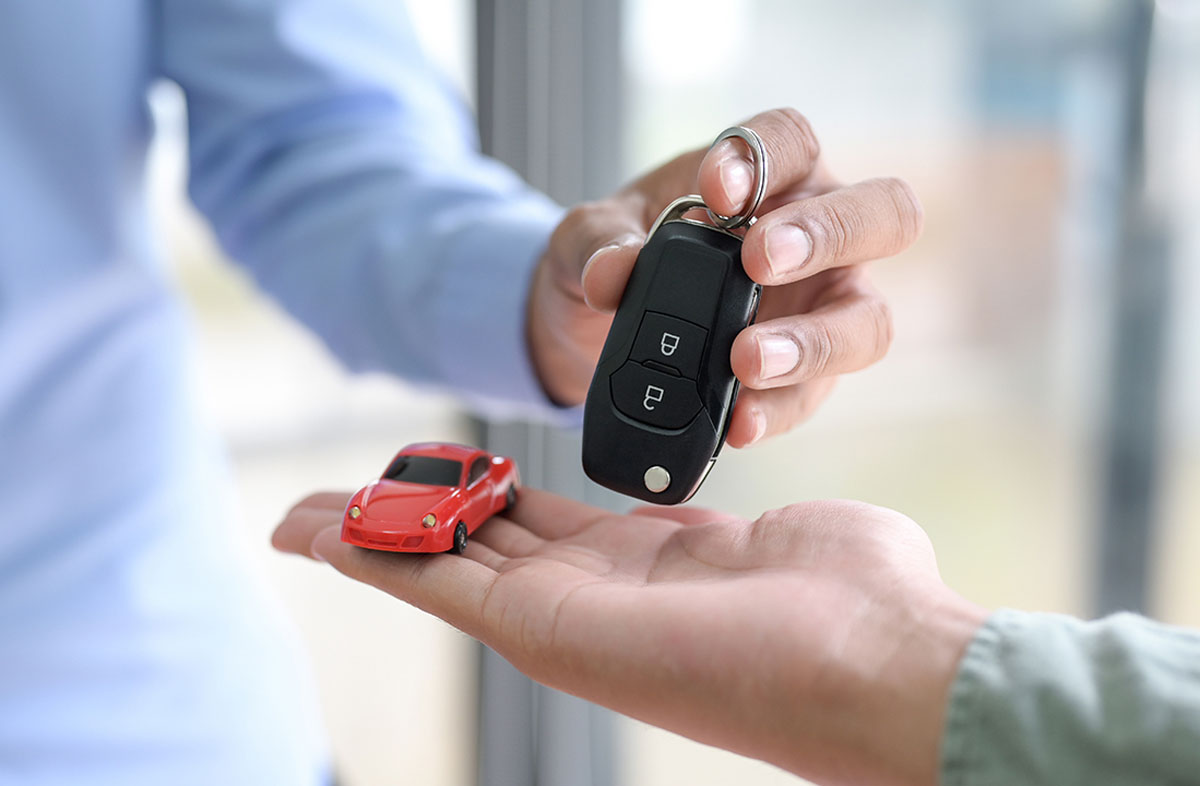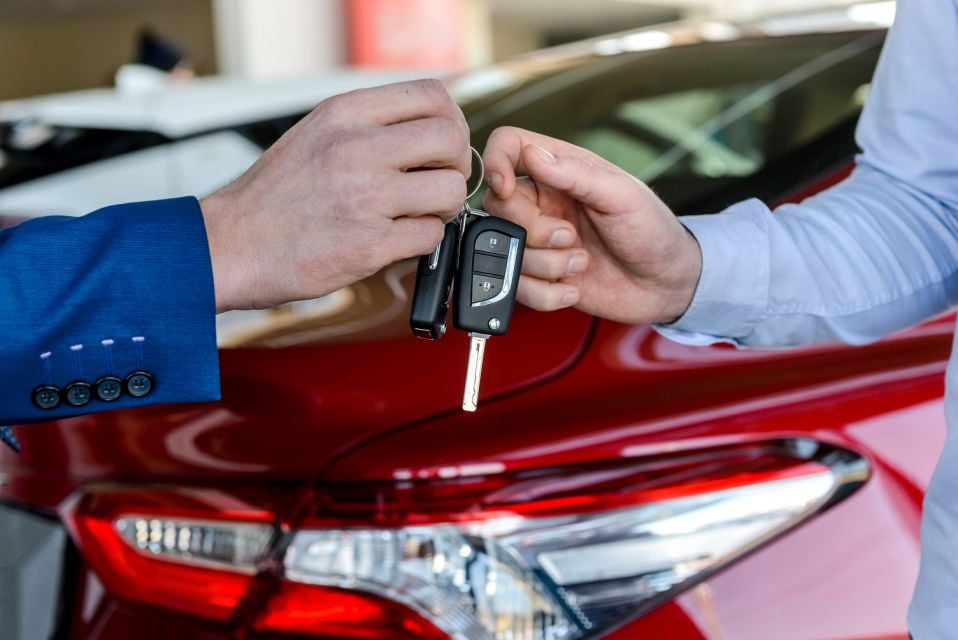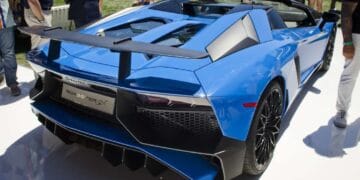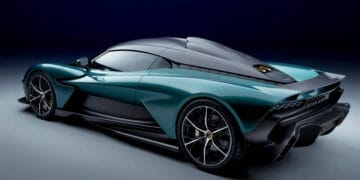Embarking on the journey of buying a car in 2025 is a significant financial decision and a complex undertaking, especially in a dynamic market like Indonesia. Far from being a simple transaction, it requires careful research, strategic planning, and a clear understanding of your needs versus desires. The automotive landscape is evolving at an unprecedented pace, with new technologies, diverse powertrain options, and shifting market dynamics constantly reshaping the choices available. This extensive article delves into the critical factors you absolutely need to know before buying a car in 2025, exploring the meticulous steps from initial research to final purchase, the essential questions to ask, and the profound impact a well-informed decision has on your finances, lifestyle, and long-term satisfaction.
Navigating Your Car Purchase

A car isn’t just a mode of transport; for many, it’s a vital tool for daily life, a reflection of personal style, and a substantial investment. A hasty or uninformed purchase can lead to financial strain, buyer’s remorse, and ongoing dissatisfaction. Conversely, a thoughtful and well-researched decision ensures you acquire a vehicle that perfectly aligns with your budget, lifestyle, and long-term needs, providing years of reliable service and enjoyment. In a market like Indonesia, where diverse road conditions, traffic patterns, and strong community focus influence choices, understanding these nuances is even more critical.
The excitement of buying a car can often overshadow the practicalities. However, by arming yourself with the right knowledge, you transform what could be a stressful experience into an empowering one. It’s about more than just finding a car you like; it’s about finding the right car at the right price, with the right ownership costs. Whether you’re a first-time buyer or a seasoned vehicle owner looking to upgrade, this guide will equip you with the essential insights to navigate the complexities of the 2025 automotive market, ensuring a smart and satisfying purchase.
Based on Your Needs and Budget
Before you even glance at a showroom or browse online listings, the most crucial step is a thorough self-assessment. This foundational work will guide every subsequent decision.
A. Determine Your Budget (Crucially):
A. Purchase Price: Set a realistic maximum for the car itself. Consider if you’ll pay cash, finance, or lease. Don’t forget sales tax, registration fees, and any dealer add-ons.
B. Monthly Payments: If financing, calculate what you can comfortably afford each month, factoring in interest rates and loan terms.
C. Total Cost of Ownership (TCO): This is paramount. Beyond the purchase price, budget for:
A. Fuel/Electricity: Calculate estimated monthly energy costs. (e.g., in Indonesia, fuel prices can fluctuate, making efficiency crucial).
B. Insurance: Get quotes before buying. Premiums vary widely by vehicle type, your profile, and location.
C. Maintenance and Servicing: Factor in routine services, tire replacements, and potential unexpected repairs. Research typical costs for the models you’re considering.
D. Road Tax and Registration Fees: Annual recurring costs.
E. Depreciation: The car’s expected loss in value over time.
B. Define Your Needs vs. Wants:
A. Primary Use: Daily commute, family transport, off-road adventures, business use, long-distance travel, ride-sharing?
B. Passenger Capacity: How many people will you regularly transport? (e.g., 2, 4, 5, 7+). This heavily influences body style (sedan, SUV, MPV).
C. Cargo Capacity: How much luggage, groceries, or gear do you need to carry regularly? Consider trunk space vs. foldable rear seats.
D. Driving Environment: Mostly city (traffic, parking), highway (fuel efficiency, cruise control), or mixed (versatility)?
E. Features – Essentials vs. Luxuries: Distinguish between absolute must-haves (e.g., essential safety features, good AC in Indonesia) and nice-to-haves (e.g., panoramic sunroof, premium audio).
C. Consider Your Lifestyle:
A. Family Size and Stage: Growing family, empty nesters, young single?
B. Hobbies: Do you need space for sports equipment, camping gear, or DIY supplies? (e.g., a pick-up truck for hauling, an SUV for adventure gear).
C. Climate and Terrain (Indonesia Specific): Do you frequently encounter heavy rain, potential flooding, or unpaved roads? Higher ground clearance (SUVs) or robust construction might be beneficial.
D. Parking Availability: Do you have garage space, or will you park on the street? Smaller cars are easier to maneuver in tight urban spaces.
Researching the Market
Once you know what you need, dive into the current automotive market. 2025 offers more choices and complexities than ever before.
A. Explore Body Styles:
A. Sedans: Often more fuel-efficient, better handling, typically more affordable, and comfortable for passengers. Great for city and highway commutes.
B. SUVs/Crossovers: Higher driving position, more cargo flexibility, available AWD/4WD for varied conditions. Range from compact urban models to large 3-row family haulers.
C. MPVs (Multi-Purpose Vehicles/Minivans): Maximize passenger and cargo space, ideal for large families. Excellent versatility.
D. Hatchbacks: Offer sedan-like driving dynamics with more cargo versatility than a sedan, thanks to the rear hatch.
E. Pickup Trucks: Unmatched hauling and towing capability, often robust construction. Increasingly popular for personal use alongside commercial.
B. Understand Powertrain Options:
A. Internal Combustion Engine (ICE): Traditional gasoline or diesel. Still dominant but facing increasing emissions regulations. Good for long range and quick refueling.
B. Hybrid Electric Vehicles (HEVs): Combine ICE with electric motor. Improve fuel efficiency significantly, especially in city driving. No external charging needed. (e.g., Toyota Hybrid Synergy Drive).
C. Plug-in Hybrid Electric Vehicles (PHEVs): Larger battery allows for significant electric-only range (e.g., 30-80 km). Can be charged externally. Offers flexibility of electric for daily commutes and gasoline for long trips.
D. Battery Electric Vehicles (BEVs): Fully electric, zero tailpipe emissions. Offer instant torque, low running costs, but require charging infrastructure and may have range anxiety for some.
E. Fuel Cell Electric Vehicles (FCEVs): Hydrogen-powered, zero emissions, quick refueling. Niche in 2025, primarily for heavy-duty commercial applications due to limited fueling infrastructure.
C. Read Reviews and Comparisons:
A. Professional Reviews: Consult reputable automotive websites and magazines (e.g., Autocar, Top Gear, Car and Driver, MotorTrend, or local Indonesian automotive media). Look for reviews that align with your priorities (e.g., family reviews for SUVs, economy reviews for sedans).
B. Owner Reviews: Check forums, consumer review sites, and social media groups for real-world ownership experiences, reliability issues, and common complaints.
C. Comparison Tools: Utilize online tools to compare specifications, features, and pricing of different models side-by-side.
D. Check Safety Ratings:
A. Independent Organizations: Look for ratings from organizations like NHTSA (USA), IIHS (USA), Euro NCAP, or ASEAN NCAP. These provide objective data on crashworthiness and active safety systems.
B. ADAS (Advanced Driver-Assistance Systems): Understand what ADAS features are standard or optional (e.g., Automatic Emergency Braking, Lane-Keeping Assist, Blind-Spot Monitoring, Adaptive Cruise Control). These are becoming increasingly important for safety and convenience.
E. Research Reliability and Resale Value:
A. Reliability Surveys: Consult consumer reliability surveys (e.g., J.D. Power, Consumer Reports) to understand a model’s typical issues and expected longevity.
B. Resale Value Projections: Research projected resale values for different brands and models. High resale value means less depreciation over time, saving you money when you eventually sell or trade in.
The Purchase Process
With your research complete, it’s time to engage with dealers and make the purchase.
A. Test Drive Critically:
A. Don’t Rush: Drive multiple models on various road types (city streets, highways, rough patches if applicable) to truly assess ride comfort, handling, acceleration, braking, and visibility.
B. Simulate Your Use: If you have children, bring car seats to check fit. Load typical cargo to assess space.
C. Pay Attention to Details: Evaluate seat comfort, infotainment system usability, cabin noise, and the effectiveness of AC (crucial in Indonesia!).
D. Test All Features: Try out all infotainment features, climate controls, and driver-assistance systems.
B. Consider New vs. Used Cars:
A. New Car Pros: Latest technology, full warranty, no prior wear and tear, often attractive financing deals.
B. New Car Cons: Higher initial cost, rapid depreciation in the first few years.
C. Used Car Pros: Lower purchase price, less depreciation, potentially wider selection within your budget.
D. Used Car Cons: Out of warranty (or limited), potential for hidden problems, older technology.
E. Certified Pre-Owned (CPO): A good compromise for used cars, often factory-inspected, reconditioned, and come with an extended warranty.
C. Dealership vs. Online Platforms:
A. Dealerships: Offer test drives, trade-ins, financing options, and direct service. Negotiating skills are key here.
B. Online Platforms: Wider selection, often more transparent pricing, can simplify initial research. Some platforms offer home delivery and virtual test drives. Many authorized dealers in Indonesia also have robust online presences.
D. Negotiate Strategically:
A. Know Your Price: Have a target price based on your research (invoice price, market value).
B. Focus on Out-the-Door Price: Don’t just negotiate the MSRP. Factor in all fees (dealer prep, documentation, taxes, registration).
C. Separate Transactions: If trading in your old car, negotiate the new car price first, then discuss your trade-in as a separate transaction.
D. Walk Away: Be prepared to walk away if the deal isn’t right. There are always other options.
E. Financing: Get pre-approved for a loan from your bank or credit union before visiting the dealership. This gives you leverage and a benchmark for dealer financing offers.
E. Understand the Fine Print:
A. Loan Agreement: Read every line of your loan agreement. Understand the interest rate, APR, loan term, and any prepayment penalties.
B. Warranty: Know what’s covered, for how long, and what voids the warranty. For used cars, understand any remaining factory warranty or extended warranty options.
C. Additional Products: Be wary of high-pressure sales for extended warranties, paint protection, or other add-ons that might not be necessary or offer poor value.
Specific Considerations for Buying a Car

The Indonesian automotive market presents unique considerations that influence purchasing decisions:
A. Road Conditions:
A. Varied Surfaces: From smooth toll roads to challenging urban streets with potholes and rural unpaved roads. This makes ground clearance a significant factor for many buyers, influencing the popularity of SUVs and MPVs.
B. Flooding: During monsoon seasons, certain areas are prone to flooding. Higher ride height can offer an advantage, but it’s essential to understand a vehicle’s wading depth and avoid driving through deep water.
B. Traffic Congestion:
A. Automatic Transmissions: Highly preferred due to frequent stop-and-go traffic. Manuals are generally less common, especially in urban centers.
B. Fuel Efficiency in Traffic: Hybrids (HEV and PHEV) offer significant advantages in city driving due to their ability to run on electric power at low speeds and utilize regenerative braking.
C. Maneuverability: Smaller, more nimble vehicles are often preferred for navigating tight streets and finding parking in congested areas.
C. Fuel Types and Availability:
A. Pertamina: Indonesia’s primary fuel supplier. Understand the available fuel grades (e.g., Pertalite, Pertamax, Pertamax Turbo) and ensure the car you buy is compatible with readily available options.
B. Diesel: Common for larger SUVs, pickups, and commercial vehicles. Understand the quality of diesel fuel available and its impact on modern diesel engines.
D. After-Sales Service and Parts Availability:
A. Dealer Network: Research the accessibility and reputation of authorized service centers for the brand you’re considering, especially in your local area.
B. Parts Availability: Ensure spare parts are readily available and not subject to long import delays. This affects repair times and costs.
C. Local Expertise: For less common or imported vehicles, check if there are mechanics with the necessary expertise.
E. Taxation and Incentives (EVs/Hybrids):
A. Luxury Goods Tax (PPnBM): Understand how PPnBM is applied, as it can vary based on engine size, fuel type, and local content. EVs and Hybrids often receive preferential tax treatment, making them more competitive.
B. Road Tax (Pajak Kendaraan Bermotor – PKB): Annual road tax calculation can vary.
C. EV Incentives: Look for any provincial or national government incentives for buying electric or hybrid vehicles, which can include tax breaks, charging subsidies, or special privileges (e.g., odd-even policy exemptions in Jakarta).
F. Resale Value in Local Market:
A. Popularity: Brands and models that are popular in Indonesia generally hold their resale value better due to higher demand in the used car market.
B. Maintenance Costs: Vehicles known for low maintenance costs and high reliability tend to have better resale value.
Long-Term Ownership
Your journey with the car extends far beyond the showroom. Long-term considerations are vital for overall satisfaction.
A. Regular Maintenance Schedule:
A. Adhere to Manual: Follow the manufacturer’s recommended service schedule to ensure longevity and maintain warranty coverage.
B. Local Conditions: In Indonesia, consider shortening service intervals for engine oil and air filters if you drive in very dusty or congested conditions.
C. Trusted Mechanic: Find a reputable service center or independent mechanic.
B. Fuel/Charging Habits:
A. Efficient Driving: Adopt fuel-efficient driving habits (smooth acceleration, gentle braking, maintaining steady speeds).
B. Smart Charging (for EVs/PHEVs): Utilize off-peak charging times, ensure access to reliable charging at home or work, and plan long trips around public charging infrastructure.
C. Insurance Coverage:
A. Comprehensive Coverage: Ensure you have adequate insurance coverage, especially for new or valuable cars.
B. Understand Policy: Know your deductible, what’s covered, and what isn’t.
D. Cleaning and Care:
A. Regular Cleaning: Protect your car’s exterior and interior from the elements, especially in hot and humid climates. This helps preserve resale value.
B. Protection: Consider paint protection, window tinting, and interior treatments to maintain the car’s appearance.
E. Warranty and Recalls:
A. Understand Warranty: Be aware of your warranty terms and conditions.
B. Stay Informed: Keep an eye out for any official recalls for your vehicle and address them promptly.
Final Checks Before Signing the Papers
Before you sign on the dotted line, perform these crucial last checks:
A. Vehicle Inspection:
A. New Car: Inspect the exterior for any dents, scratches, or paint imperfections. Check the interior for any flaws. Ensure all features work.
B. Used Car: This is even more critical. Consider getting a pre-purchase inspection (PPI) by an independent mechanic. Check for fluid leaks, tire wear, dashboard warning lights, and any signs of accident damage.
B. Verify Documents:
A. New Car: Ensure all registration documents, owner’s manual, and warranty information are correct and complete.
B. Used Car: Verify the vehicle’s title (BPKB in Indonesia), registration (STNK), service history, and any loan liens. Ensure VIN numbers match everywhere.
C. Confirm Pricing:
A. Itemized Bill: Get a detailed, itemized bill of sale showing all costs, including the vehicle price, taxes, fees, and any optional extras.
B. Final Loan Terms: Confirm the exact interest rate and monthly payment before signing.
D. Take Your Time:
A. Don’t Feel Rushed: A good dealership will allow you to take your time. Avoid high-pressure tactics.
B. Review Everything: Read all documents thoroughly before signing. If anything is unclear, ask questions.
Conclusion
Buying a car in 2025 is an exciting prospect, filled with innovative choices and technological advancements. However, it’s a decision that demands diligence and a clear strategy. By meticulously assessing your true needs and budget, thoroughly researching the myriad of available options, and navigating the purchase process with informed confidence, you empower yourself to make a choice that goes beyond immediate gratification.
For buyers in Indonesia, understanding the local context—from road conditions and traffic to fuel availability and specific incentives for greener vehicles—is paramount for a successful and satisfying ownership experience. Your car will be a companion for years, reflecting not just your personal style but also your commitment to smart financial planning and long-term reliability. Armed with these crucial insights, you’re now ready to embark on your car-buying journey, not just buying a vehicle, but investing wisely in your future mobility and peace of mind.














